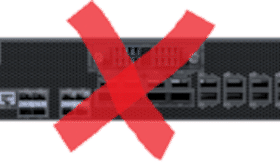Telcos vs hyperscalers in the race for 5G edge computing
This article appeared on RCR Wireless
As telco operators around the world ramp up 5G networks, they’re increasingly faced with competitors that are making it difficult to successfully monetize those networks. Despite that operators have made huge investments in networks – both legacy and 5G – their returns haven’t been proportional to their investment.
Moreover, revenue from connectivity continues to decline, even as expectations are growing for higher bandwidth, faster speeds, lower latency – and all at a reduced price. As such, it’s vital for operators to focus on new business services, especially those like edge computing. The edge computing market is rapidly developing and attracting new players, providing new opportunities to operators – as well as their competitors. Savvy operators are using the edge to move up the value chain and generate more revenue from their networks and services. Moreover, the edge gives telcos the ability to extend their role beyond offering connectivity services and move into the platform and the application space.
One of the biggest competitors to operators at the edge are hyperscalers or webscalers like Amazon, Google, Facebook, Microsoft and Alibaba – companies that have deep pockets and the technology know-how needed to scale up based on increased demands on the system by adding compute power, memory, network and storage resources.
How can operators win at the edge?
Currently, webscalers are taking advantage of their lean operations and global presence to build capabilities that have the potential to compete against telco operators. As such, webscalers are pursuing new value creation in 5G and edge computing, despite that they don’t necessarily have the penetration or last-mile connectivity of Radio networks – the forte of communication services provider (CSP) networks.
When considering a technology ecosystem for 5G and edge computing, there are multiple technological components involved, including compute and networking infrastructure, data collection devices, low latency and high bandwidth connectivity. Additionally, there’s artificial intelligence (AI), machine learning (ML) and a cloud data management (CDM) layer that stitches everything together.
It’s important to understand how these components are integrated, as well as how to collaborate and co-create to simplify the ecosystem. Edge computing is critical to support 5G applications – especially, latency-sensitive applications. For instance, with augmented and virtual reality (AR/VR), cloud gaming, automated transportation and drones, it is critical to be within a certain millisecond bandwidth for an acceptable user experience.
So, what’s needed at the edge? Read the rest of the article on RCR Wireless
Uncover additional insight: Download your copy of the Secrets of Data Management for the 5G Core eBook today to better understand and reap the benefits of data management in 5G networks.
The eBook crystallizes the insights that Enea Openwave has gained through 15 years of managing subscriber data in some of the largest operator networks, including deployments with Tier 1 networks in North America and Europe.


